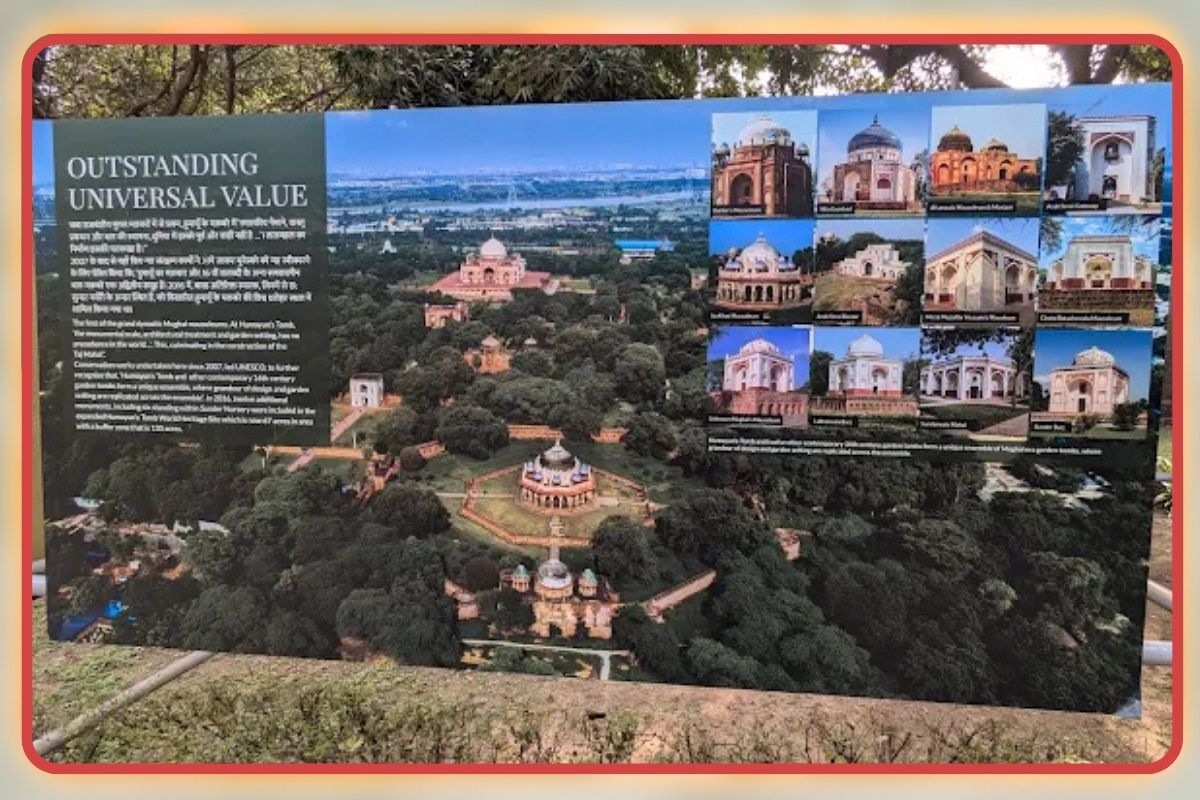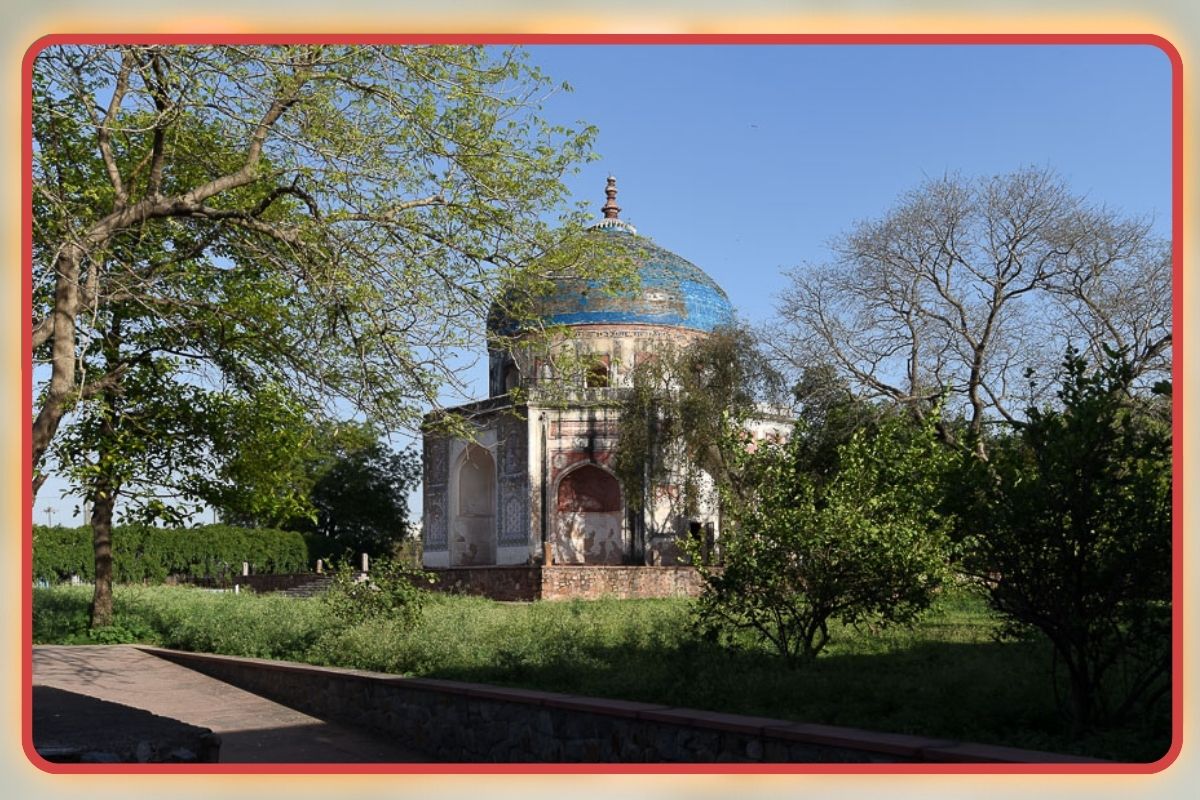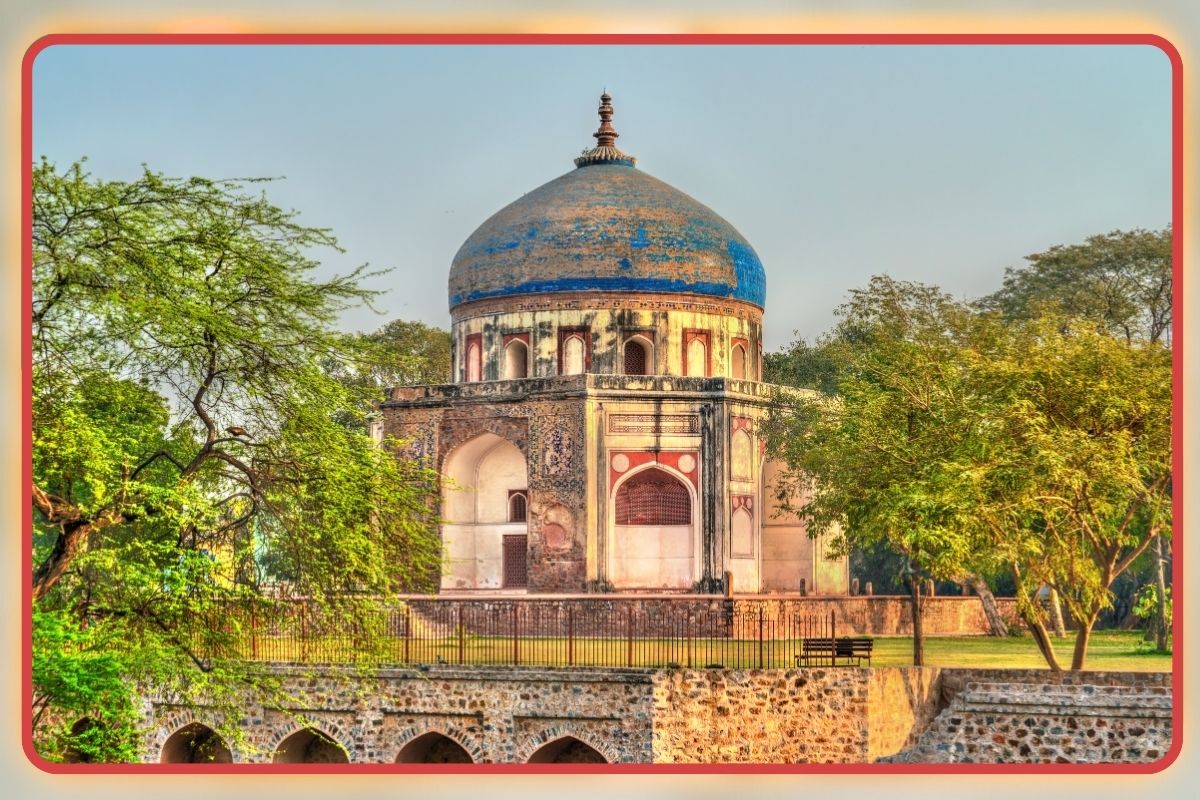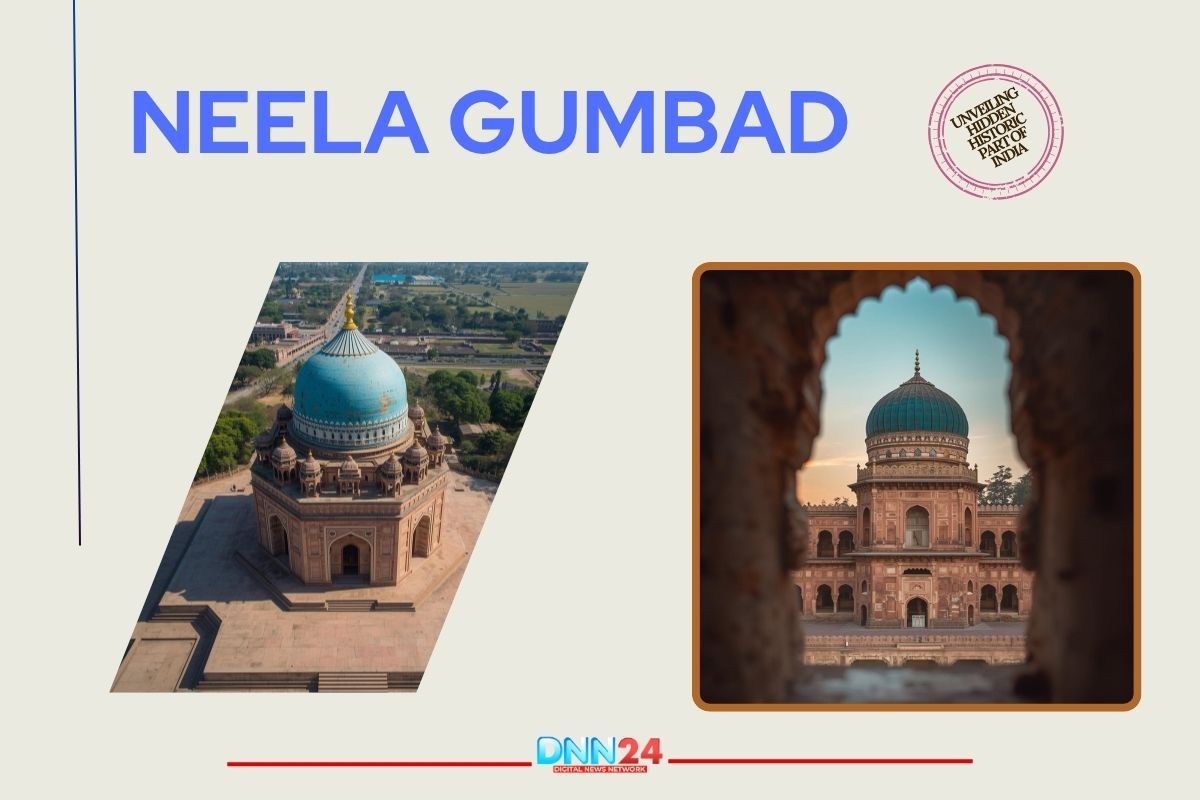Standing in the shadow of the famous Humayun’s Tomb in Delhi, Neela Gumbad quietly holds its own tale. The name translates to “Blue Dome,” a fitting description for a monument whose surface once gleamed with brilliant turquoise tiles. The exact identity of the person buried within remains a subject of scholarly debate, but this uncertainty adds to the monument’s allure. Most historians place its construction in the early Mughal period, a golden age when architecture and artistic expression flourished across the empire. The blue and green glazed tiles that once covered its exterior gave this tomb a character unlike any other structure in the area.

While Humayun’s Tomb attracts crowds with its imposing scale and historical importance, Neela Gumbad offers something different. It stands as a quieter testament to Mughal craftsmanship, a hidden treasure tucked away in Delhi’s sprawling historical landscape. The monument does not shout for attention but rewards those who seek it out. Its presence speaks to a time when buildings were more than functional structures, they were expressions of devotion, artistry, and the desire to leave something beautiful behind. For visitors willing to look beyond the more famous monuments, Neela Gumbad presents an intimate encounter with history, where each architectural detail tells part of a larger story about the people who built it and those who rest within.
The Mystery of Its Occupant and Historical Connections
Most scholars believe Neela Gumbad serves as the final resting place of Fahim Khan, a devoted attendant to Abdul Rahim Khan-I-Khana, one of the greatest poets and nobles of the Mughal court. Historical records suggest Fahim Khan was laid to rest here in 1626, during the reign of Emperor Jahangir. His loyalty to his master earned him a tomb that reflected the artistic standards of the time. However, another theory challenges this timeline, proposing that Neela Gumbad might predate even the construction of Humayun’s Tomb, which would place it much earlier in the architectural history of the region.

This alternative dating remains contentious but adds layers to the monument’s story. The tomb represents more than just a burial site; it embodies the relationships and social structures of Mughal society. The presence of an old gateway in the enclosing walls of Humayun’s Tomb complex that leads directly to Neela Gumbad suggests the two monuments were always meant to be connected. This architectural link speaks to a deliberate planning that united these structures in purpose and design. The memorial thus becomes a bridge between individual memory and collective heritage. It reminds us that Mughal architecture was not created in isolation but as part of a broader conversation between buildings, their occupants, and the landscape they inhabited together.
Architectural Brilliance in Blue and Stone
Neela Gumbad displays architectural features that set it apart from typical Mughal tombs. The structure appears square when viewed from inside, but transforms into an octagonal shape on the exterior, a clever design that demonstrates sophisticated spatial understanding. The builders used plaster and rubble as primary materials, but what truly distinguished this tomb was its exterior decoration. Glazed tiles in vibrant shades of blue, green, and white once covered the outer walls, creating a visual spectacle that would have caught the eye of anyone passing by. Time and weather have taken their toll, and today only fragments of these colourful tiles survive, with the northern facade retaining the most visible remnants.

Yet even these partial remains hint at the monument’s former glory. The dome itself rises from a cylindrical drum constructed of red bricks, topped with a kalasa finial, an ornamental feature resembling an inverted lotus that adds grace to the structure’s silhouette. Inside, visitors can still observe the intricate plaster medallions that decorate the ceiling, along with semi-octagonal alcoves and ventilated squinches that show the technical skill of Mughal artisans. These architectural elements were not merely decorative but served practical purposes, managing light, air circulation, and structural stability. The attention to both form and function reveals how Mughal builders approached their work with a completeness that modern architecture sometimes lacks.
Modern Life Meets Ancient Heritage
The location of Neela Gumbad today presents an interesting contrast between past and present. The monument sits close to railway tracks and Nizamuddin Station, where trains rumble past daily and modern Delhi continues its relentless pace. This proximity to contemporary infrastructure initially seems incongruous, yet it actually creates a living relationship between the ancient tomb and the city that has grown around it. Decades ago, a road cut through the historic area, fragmenting the architectural landscape, but recent restoration efforts led to the road being relocated to better preserve the monument’s setting. Between 2011 and 2019, comprehensive conservation work undertaken by the Aga Khan Trust for Culture and Tata Trusts brought new life to the deteriorating structure.

The restoration went beyond simple preservation; it included training programs that taught local young people the traditional craft of tile making, connecting them with skills that had been fading from practice. This educational component transformed the conservation project into something more meaningful, giving contemporary artisans a tangible link to their ancestors’ work. The monument now stands not just as a protected relic but as a working example of how heritage can actively engage with present communities. This approach to conservation recognises that monuments are most valuable when they remain part of living culture rather than being isolated behind barriers as museum pieces frozen in time.
Experiencing the Blue Dome Today
A visit to Neela Gumbad offers something more profound than typical sightseeing. The monument invites contemplation about the people who commissioned it, the artisans who built it, and the centuries that have passed since its completion. Standing before its weathered walls and faded tiles, visitors encounter a physical connection to Mughal India that feels more personal than encounters with grander, more polished monuments. The structure speaks of loyalty, one man’s devotion to another, preserved in stone and tile. It speaks of artistic ambition, the desire to create beauty that would endure beyond a single lifetime. It also speaks of cultural complexity, the intricate social networks, and aesthetic values that shaped Mughal society.

The blue dome, even in its current state with only traces of its original colour remaining, possesses a dignity that transcends its size. For travellers exploring Delhi’s historical sites, this monument represents a different kind of experience. It requires no crowds, offers no gift shops, and demands nothing except attention and imagination. Each remaining tile, each carved detail, each archway frames a view not just of physical space but of temporal distance, the centuries separating us from its builders. This monument demonstrates that history is not abstract or distant but present in the materials we can touch and the spaces we can inhabit, connecting past intentions with present awareness in a way that enriches both.
Also Read: Purana Qila: Where Delhi’s Ancient Heart Still Beats
You can connect with DNN24 on Facebook, Twitter, and Instagram and subscribe to our YouTube channel.

